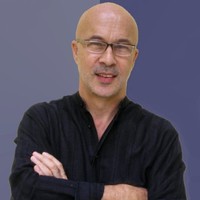What is Dub Music?
A series of Interviews with Ray Hitchins on Jamaica's Popular Music
 Our interview with Ray Hitchins continues as we explore the question of Dub Music and its origins.
Our interview with Ray Hitchins continues as we explore the question of Dub Music and its origins.
This music form evolved in Jamaica during the 1970s, and was popular among attendees of the dance halls but shunned by the established radio stations. It was not until much later in the decade that the new music form began receiving airplay at JBC, thanks to a sound engineer named Michael Campbell, popularly known as Mikey Dread.
Transcription
Dub music has a strong association with Jamaica and it certainly originated on the island and came out of the needs of the sound system and the dance hall, where the sound system created a very unique aesthetic in terms of musical performance and the way that music was consumed.
When trying to understand dub, its unique in the sense that it traditionally emerged as a byproduct of an pre-existing piece of music. So for example, you would have a reggae recording that was made, and the producer may decide to then have it remixed by the engineer, where the vocal was removed and then the musical instruments were rearranged by the audio engineer using the mute controls on the mixing console. By muting a track he could remove one of the instruments or by unmuting he could bring it back in. And so, this new musical rendition of an existing piece of music could be established. And, the audio engineer would also be allowed to introduce copious amounts of reverb and echo and other effects, where there was great levels of ingenuity and imagination that was incorporated into those sounds.
Although King Tubby and Lee Scratch Perry are often associated with this music form, it would appear that it came out of, not any single location but all the major recording studios at the turn of the 1970s were using this treatment of music. Certainly at Treasure Isle there is some evidence that both Byron Smith before he left, and then Errol Brown [JTL: Bob Marley's Audio Engineer] he took over, and when Sonia Pottinger took over the Duke Reid catalog, that, for example, Treasure Isle Volumes 1 and 2, which were dub mixes, are described by Errol Brown as being a way of extracting additional revenue from those sound recordings.
And, this would have a been a common approach that producers of the period would have used. Errol also talks about the fact that Tubby would come to Treasure Isle to do dub mixes of certain sound recordings, which makes sense given the fact that during that period Tubby had a sound system which he was famous for and was a leader in sound system technology. As the 70s progressed he moved more and more into the recording of music and eventually established a recording studio which he became famous with as well.
So, in terms of the originators, it is hard to put any one name, and I would discourage people from making that assumption between any one actor and the music form. It was a collective style of music, and traditionally as I said, it was associated with an existing music form, but it has emerged... as now it's accepted as a music form that you can create from scratch. Although it... you know, in other words you can compose a piece of music, but the interesting thing about it is that it features the mixing of the instruments rather than the performance of the instruments. It's really about what the audio engineer does to the instruments as opposed to what the instrumentalist, how he performs the instrumental parts.
So what we have is a music form that is completely dependent on multi-track recording technology. And in Jamaica as they move from four to eight track at the end of 1960s moving into the 1970s, thats where you start to see Dub as a sound aesthetic in the recording studio, kind of emerge and come into its own.
 Our interview with Ray Hitchins continues as we explore the question of Dub Music and its origins.
Our interview with Ray Hitchins continues as we explore the question of Dub Music and its origins.
